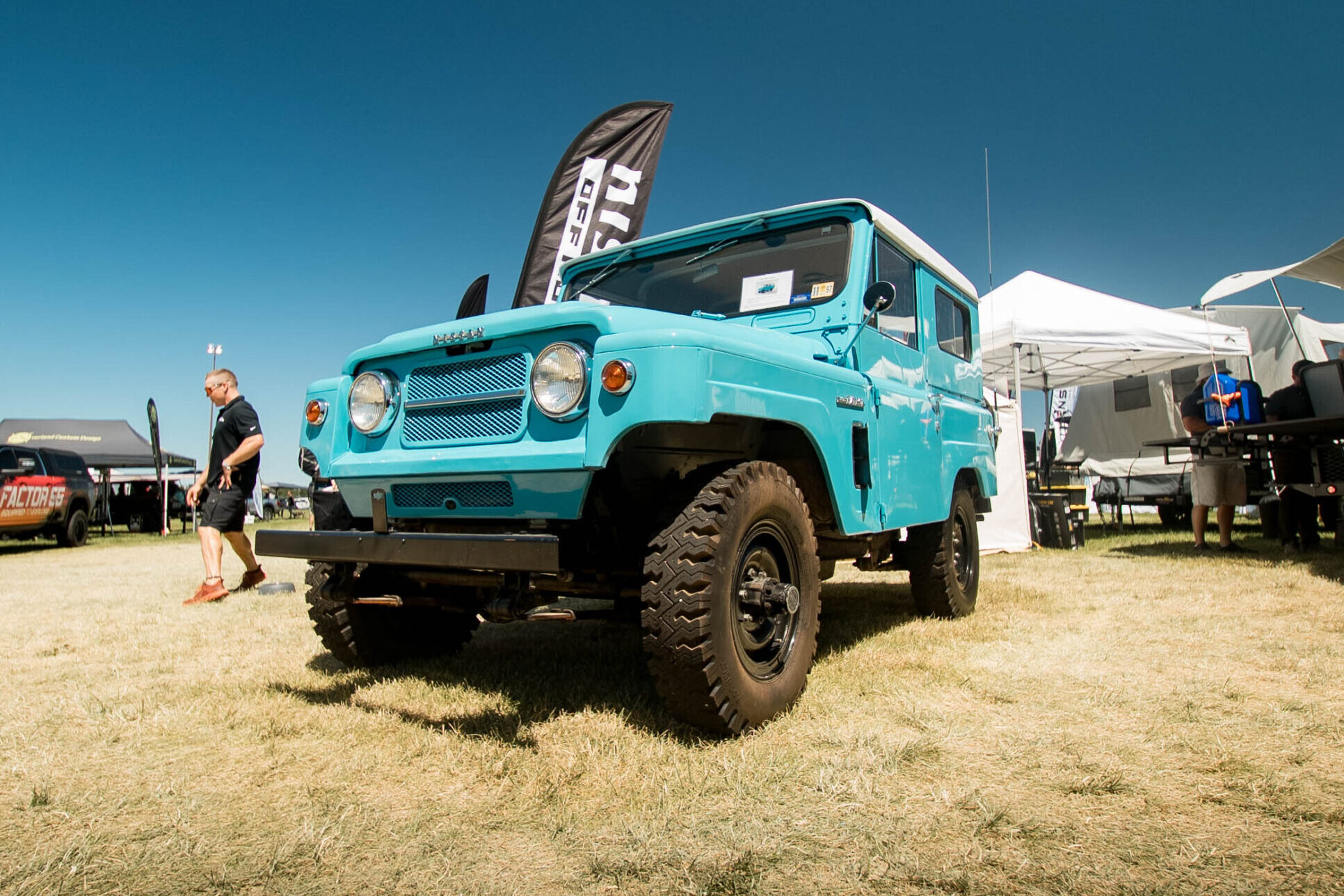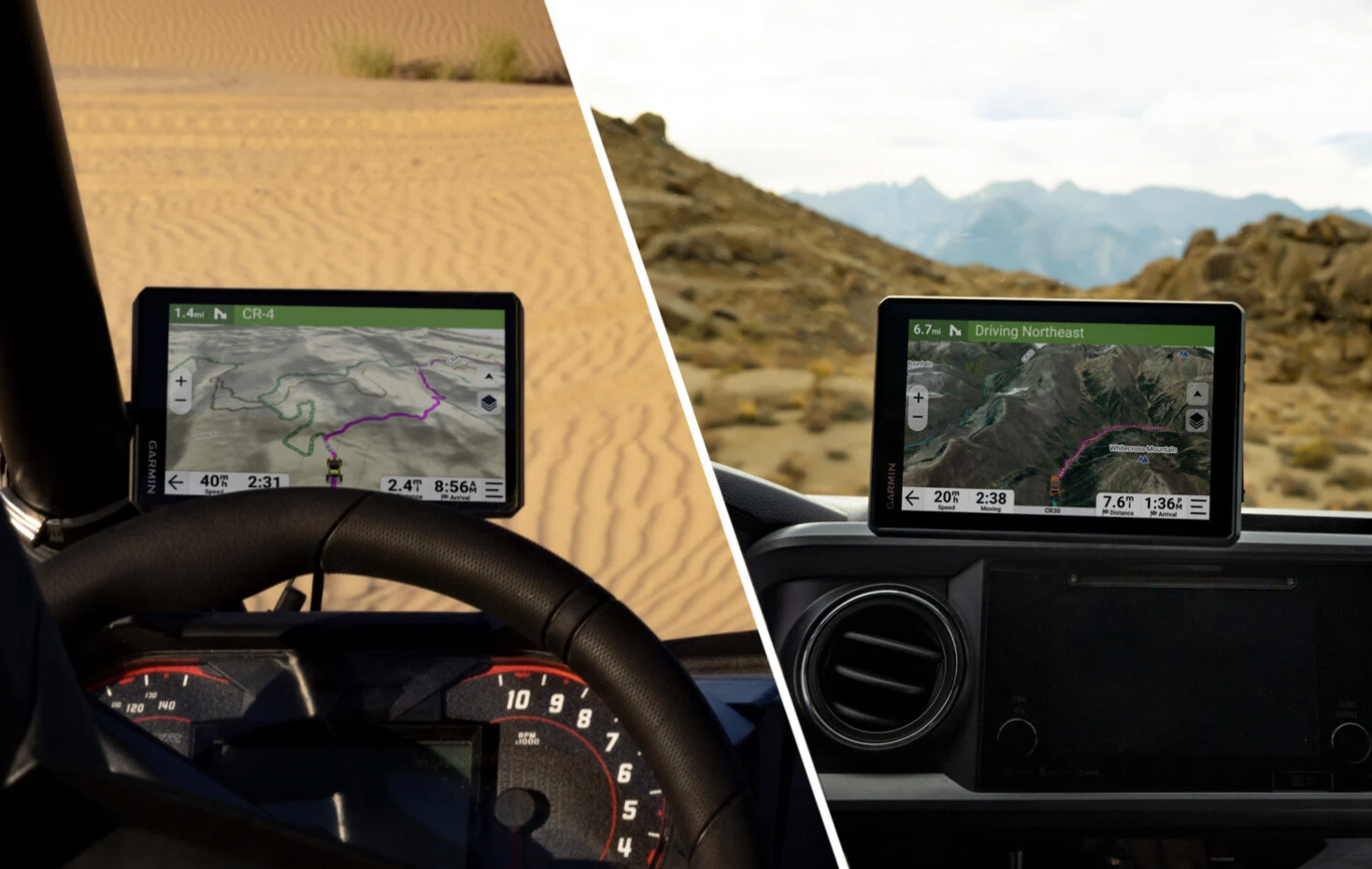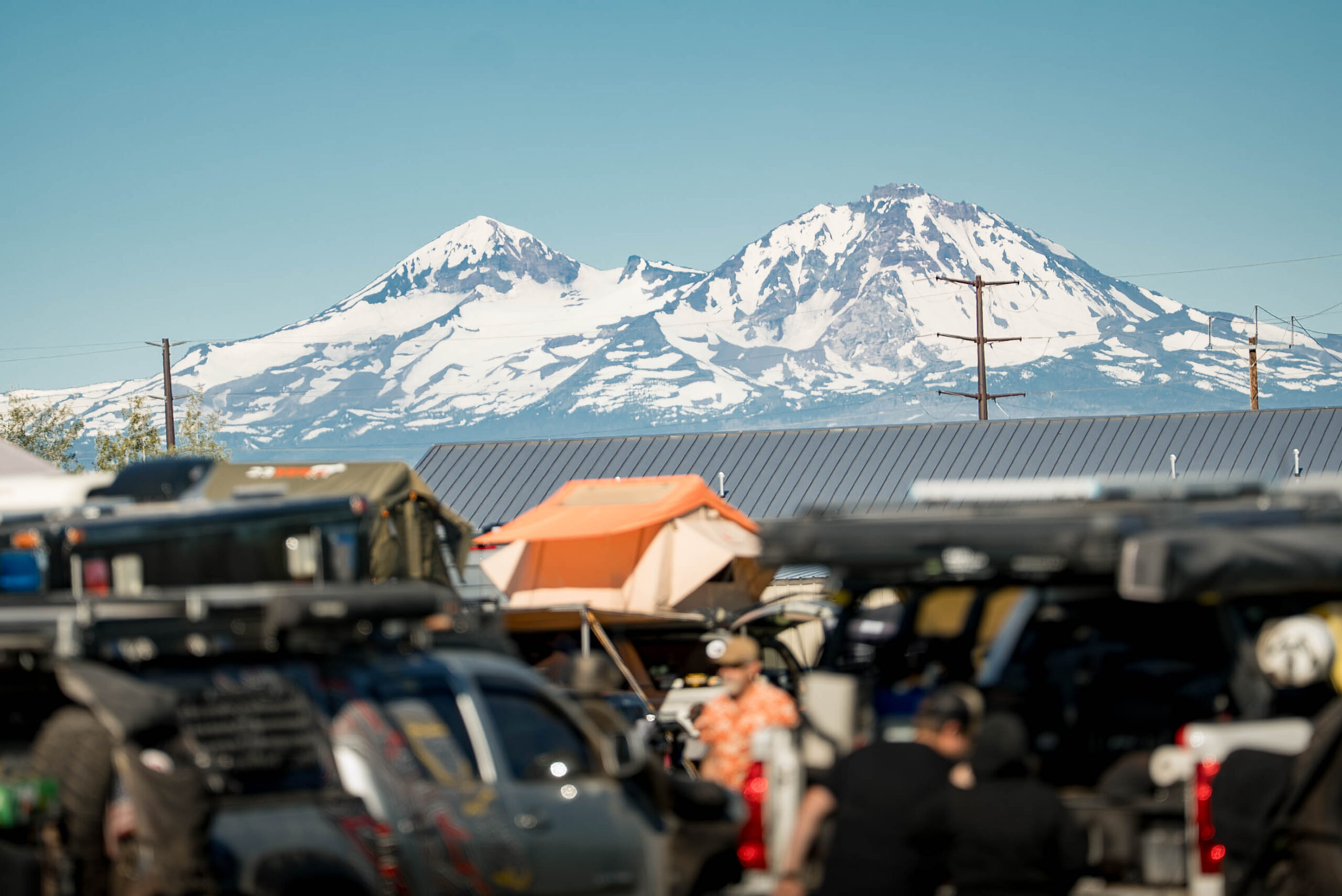Quick take: Chevy’s decision to arm all of the new Colorado midsize trucks with a 2.7-liter turbo four might seem misplaced. But modern engine management technology means it’s actually the smarter choice — both for Chevrolet and its buyers. We drove the new trucks on curving California backroads and a tight, technical dirt passage and found the new platform is both capable and comfortable.
The new Colorado is a big opportunity for Chevrolet to re-think, reskin, and reimagine what a mid-size truck should be. But the new version also has big shoes to fill — the second-gen nearly topped our list of the best overland vehicles. Kicking off the third-gen Colorado, Chevrolet imagined every Colorado — from the $29,200 Work Truck to the $46,800 ZR2 ground pounder — with the 2.7-liter inline-four turbo-powered crew cabs with 5-foot beds. Period. At least, for now.
Obviously, the options list runs deep and long, but all of the trims have the inline four turbo and five-footy box in common to start. The chassis is all new and GM says it’s a tick over 3.0 inches longer than the previous Colorado. Also in common: Each variant, including the steel-wheeled Work Truck, sports the new 11.3-inch touch screen and the 8-inch color LCD instrument panel, although an optional wider instrument panel will be offered on the upper Z71 and ZR2 versions. But there’s no analog tach or speedometer to be found on any of the new Colorados, it’s all just bits and bytes now. That said, the standard speedo setting includes a round tach and is both legible and simple. A steering wheel button changes the layout.
One dial that is present is the drive mode and 2WD/4WD selector, located to the left of the transmission selector between the seats. It cycles the lower trims through Normal, Tow/Haul and Off-Road modes, while the upper trims add Terrain (a rock crawling mode) and Baja mode on the ZR2 and it’s even more rare variant, a forthcoming ZR2 “Baja” trimmed desert-racing version.
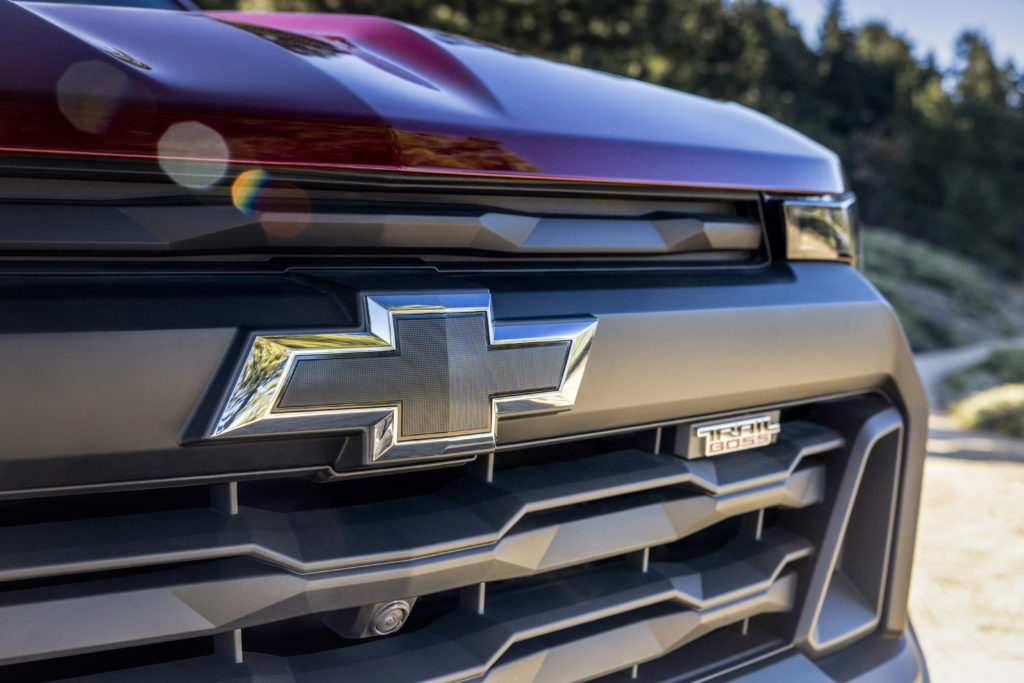
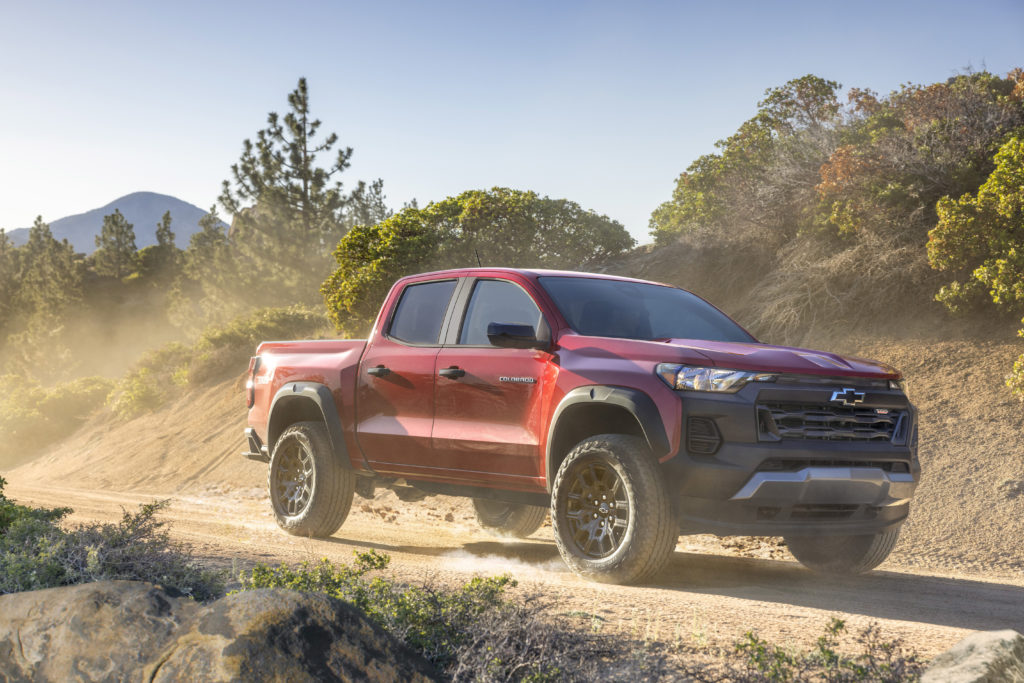
The transmission in each truck is a second-generation 8-speed HydraMatic auto with gear change buttons on the shifter for manual operation (sorry, no paddles). The updated automatic has been optimized for “smoother shifting and quicker downshifts,” according to Chevrolet. Safety bits include Forward Collision Alert, Automatic Emergency Braking, Front Pedestrian Braking, Lane Keep Assist with Lane Departure Warning, Following Distance Indicator and IntelliBeam automatic high-beam assist with the Chevy Safety Assist package.
On the hard parts list, the tailgate wars continue, and for this round, Chevy has put a 48-inch wide storage compartment in the inside of the tailgate, complete with drain if you want to keep some drinks on ice. The compartment seals with two small levers but it does not appear to be lockable. The tailgate will also stay in the half-down (or up?) position for hauling long cargo at the wheel well height (such as plywood sheets). There are eight tie-down hooks in the bed with pre-drilled spots for more.
As for options, since the base architecture of the trucks — except the ZR2 — are pretty much identical, any of the models can be optioned up to higher Turbo Plus output, four-wheel drive and interior upgrades, including the base Work Truck. All of the trucks have 131.4 inch wheelbases, while the Trail Boss and ZR2 widen out from 62.6 inches to 66.2 inches. Ground clearance ratchets up from 7.9 inches in the WT and LT, to 8.9 for the Z71, 9.5 for the Trail Boss and a tall 10.7 inches for the upcoming ZR2.
The Trail Boss gets a 2.0-inch factory lift. The ZR2 rises three inches over the base models. The ZR2 also receives Multimatic DSSV dampers as standard. Interior trims differ mostly in materials, from cloth to leatherette seats and plastic to soft-touch surfaces with contrasting stitching. Nice, but not overkill, thankfully. Bose audio is another option and can provide near concert-level sound pressure when pushed.
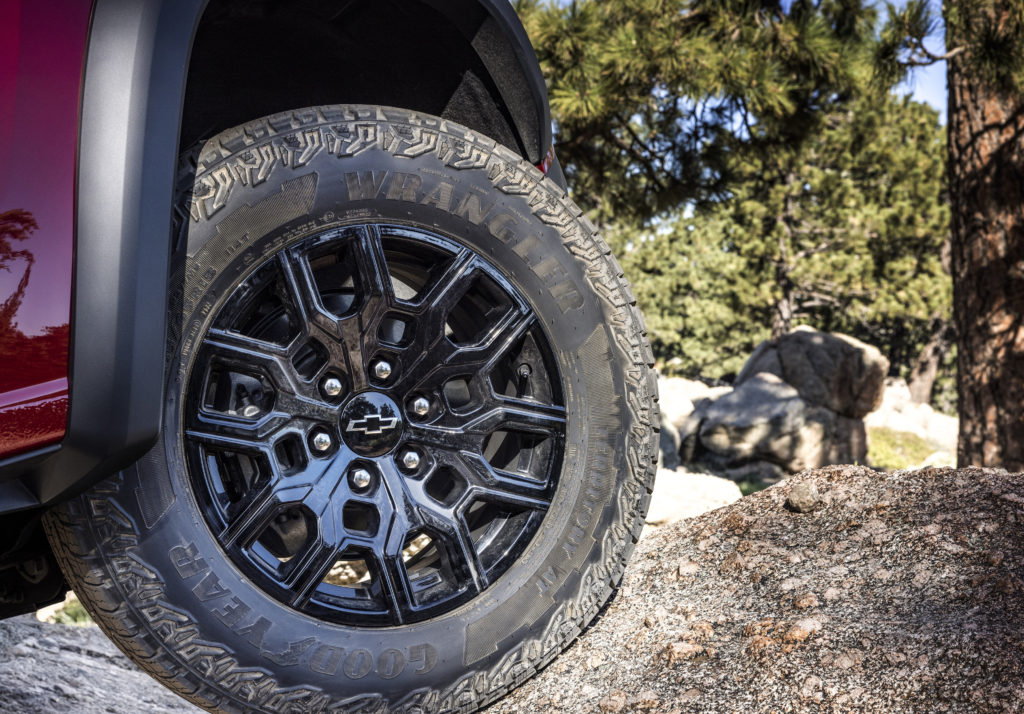
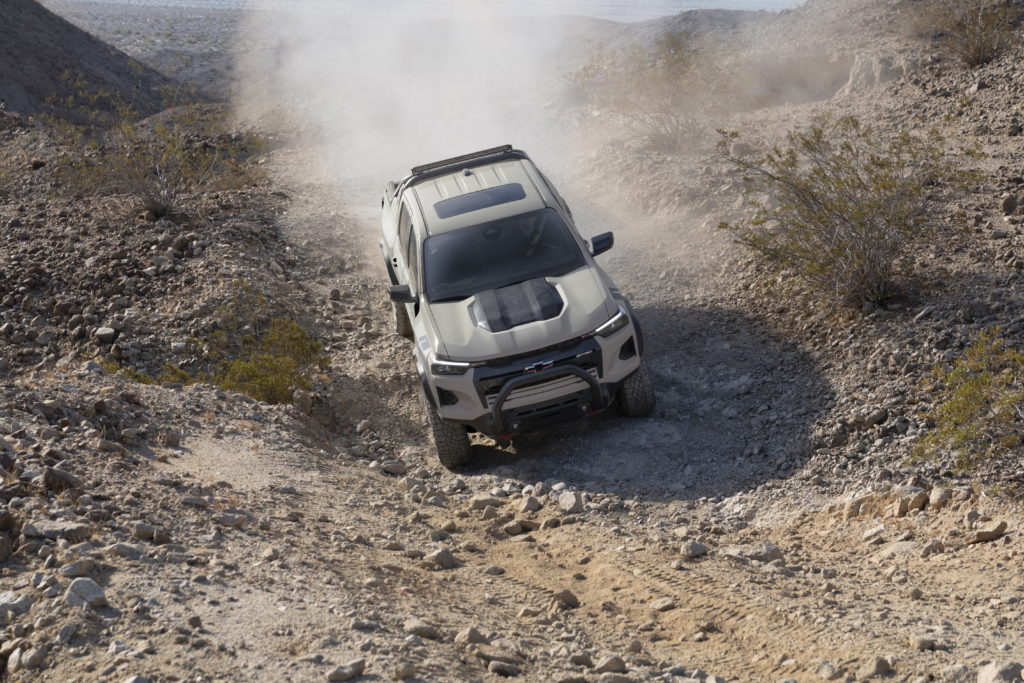
Overlanders should take note of approach and departure angle stats, which were not published for the Work Truck but work out to 29.1/22.3 for the Z71, 30.5/22.4 for the Trail Boss and 38.3/25.1 for the ZR2. GM designers said they moved the front wheels of the Colorado forward to improve approach figures. The ZR2 also includes undercarriage skid plates as standard, and owners can also option undercarriage cameras for the Z71 and ZR2 to see how the truck is faring over obstacles. The cameras will reportedly have a built-in lens cleaning device of some sort since it can tend to get dirty down there. GM says a total of up to ten cameras can be built into the trucks for both a 360-degree view and for assisting with the now standard Hitch Guidance, Hitch View and Chevy’s Trailering App.
Engine
As noted, the heart of the matter for the new Colorado line is GM’s L3B 2.7-liter inline four with a BorgWarner turbo that maxes out at 22 psi of boost. This is not a new engine for GM, as it has seen service in both the Silverado, Sierra and the Cadillac CT4 and CT4-V, where it makes a rather impressive 325 horsepower and 380 pound feet of torque at full honk.
For the Colorado, it’s been massaged a bit for work duty rather than flat out speed, and comes in three trims: the base Turbo in the Work Truck, where it’s limited to 237 horsepower and 351 torques, plus some minor parts differences which give it the L2R designation. Turbo Plus in the L3B configuration bumps output to 310hp and 390pf of torque, and top-tier Z71 and ZR2 trims get the Turbo High-Output tune with 310 hp but 430 pound feet of torque. The top-spec H.O. versions are standard on the Z71 and the halo ZR2, which will debut later this summer.
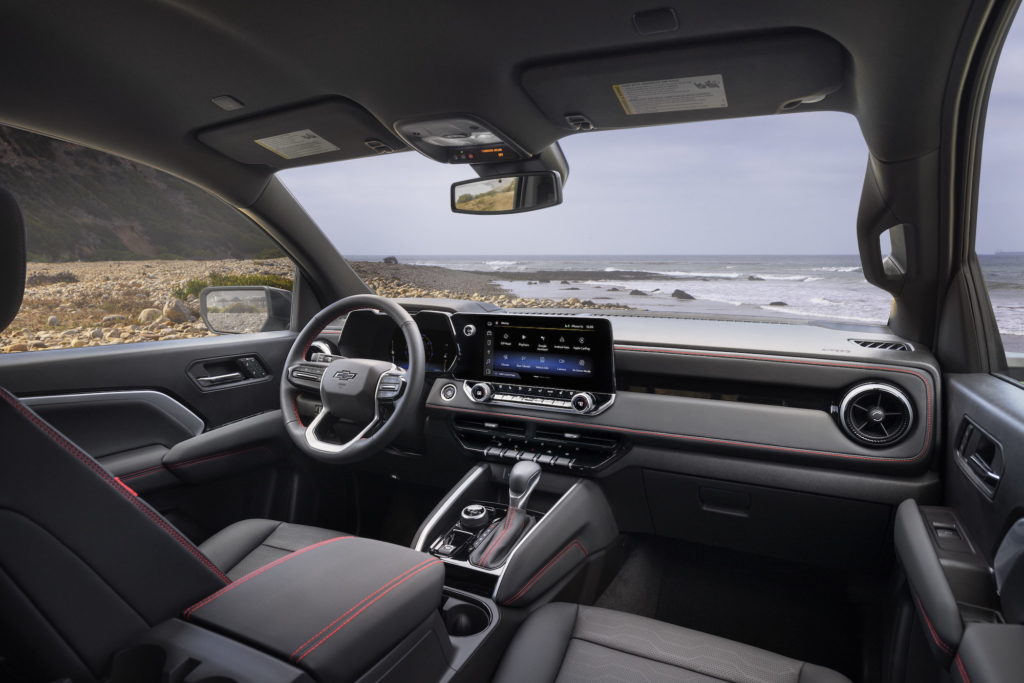
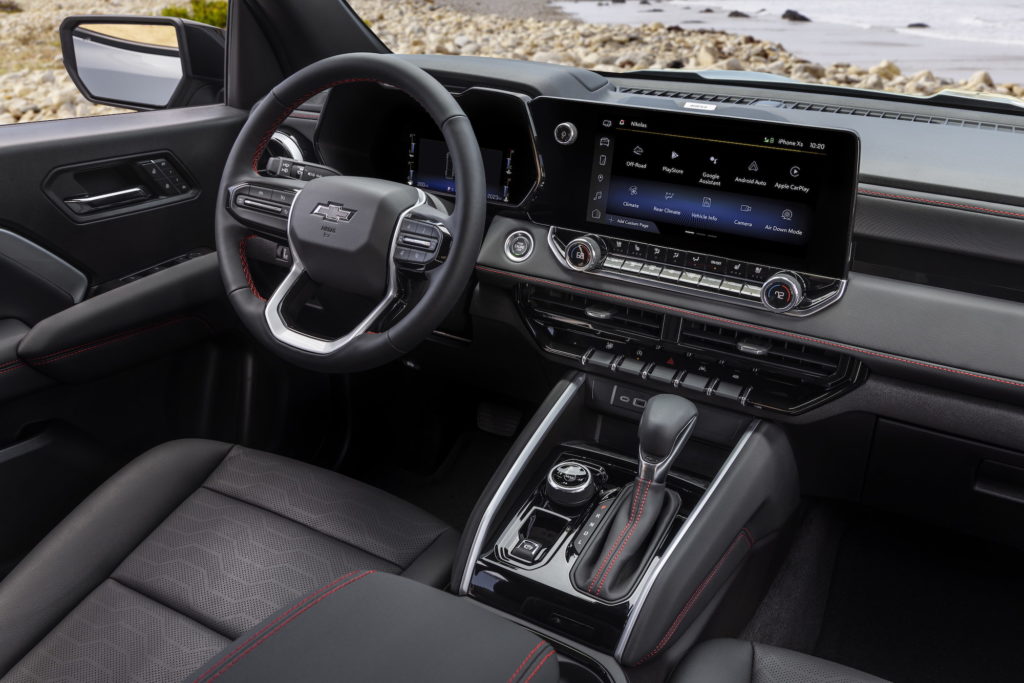
As such, the base motor is rated for 3,500 pounds towing with the two upper trims rated for 7,700 pounds. However, both the Work Truck and LT trims can be bumped to Turbo Plus for more load capacity.
According to an in-person presentation on the engine with Kevin Luchansky, Assistant Chief Engineer at GM, the turbo four received some updates for 2023, including a more rigid cylinder block casting, a stiffer crankshaft, and a fully forged bottom end. At the technical session, he pointed out the changes on an engine on a stand and a table full of parts pulled from an endurance test engine teardown. Luchansky explained that the motor is essentially the same except for the top trim, which only differs in the subtraction of under-piston oil sprayers and noise-dampening bits in order to maximize efficiency for the H.O. plant.
READ MORE: The Best Vehicle for Overlanding
Additionally, the 2.7 uses ring tech and other bits converted from GM’s diesel engines. Luchansky told Overland Expo that the team basically wanted diesel-like performance from the gas four-banger, while allowing for essentially firmware upgrades for more output. Also, the 2.7 is designed to run on regular gas — no premium required. Luchansky said that the 2.7 approach simplified the truck in several ways, saving costs they could then pass on to buyers. In a market where some truck trims are edging towards six figures, to bring the uber-capable ZR2 in at under $50,000 is a worthy goal. GM also claims that the turbo four makes more power than their 3.6-liter V-6 and 2.8-liter turbo-diesel engines.
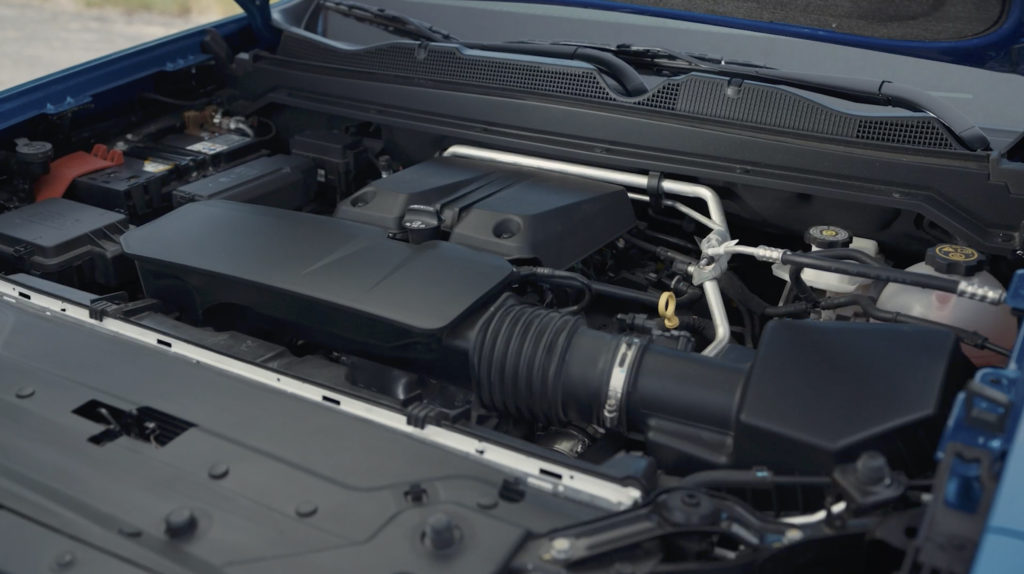
A point of pride for Luchansky was the motor’s cooling system, which essentially runs independent of the motor itself by using an electric water pump instead of being driven off the crank via gears or a belt. That allows the cooling system to perform at maximum capacity as needed, including when the truck is at idle after a long climb or towing session, which should go a ways in preventing blown head gaskets and other heat-related problems.
Luchansky also said that the entire engine warms up more as a unit instead of from the heads down, further protecting parts from thermal difference issues. Luchansky told those gathered that they “beat the crap” out of the engine in real-world testing, including a long-term towing test at maximum weight.
Drive Experience: Off Road
Monday dawned cool but sunny and I piled into a Trail Boss with YouTuber GeneralMotorsJeff and we headed into California hill country around the town of Julian. The Trail Boss, with its wider footprint, felt planted and confident on the circuitous two-lane highways, despite wearing the most off-road aggressive tires of the two trucks we drove that day. Interior noise was low and the seats were comfortable and supportive. We didn’t track gas mileage too closely as we pushed hard into the throttle when space and traffic allowed, and the Trail Boss surged forward with authority with the drive mode set to Normal and in 2WD mode. A longer drive test will reveal more.
The Trail Boss was easy and fun to drive on the highway, but soon we regrouped at a small store and then headed into the hills on a bumpy and sometimes steep dirt road. Dropping the Trail Boss into 4WD and Off Road mode made short work of the hills and sand washes we encountered, and we dialed up the pitch and roll screen on the driver’s display to see how much fun we were having — and to avoid having a bit too much fun.
Eventually, we came upon a deeply rutted section with a steep drop and bump, and I put the Trail Boss into Terrain Mode and 4-Low, which requires a shift to Neutral for engagement. I eased the truck down the drop-off and for a moment it tipped side to side as only two wheels maintained contact, but easing forward using the “one pedal” technique afforded by Terrain mode, I added on some power and with a bit of wheel slip and a slight rub on the undercarriage, I was through the obstacle and continued up the steep hill. A short distance away, we cleared a less-severe second gap, and then GMJeff and I got into a Z71 for the ride back down the same stretch of dirt road.
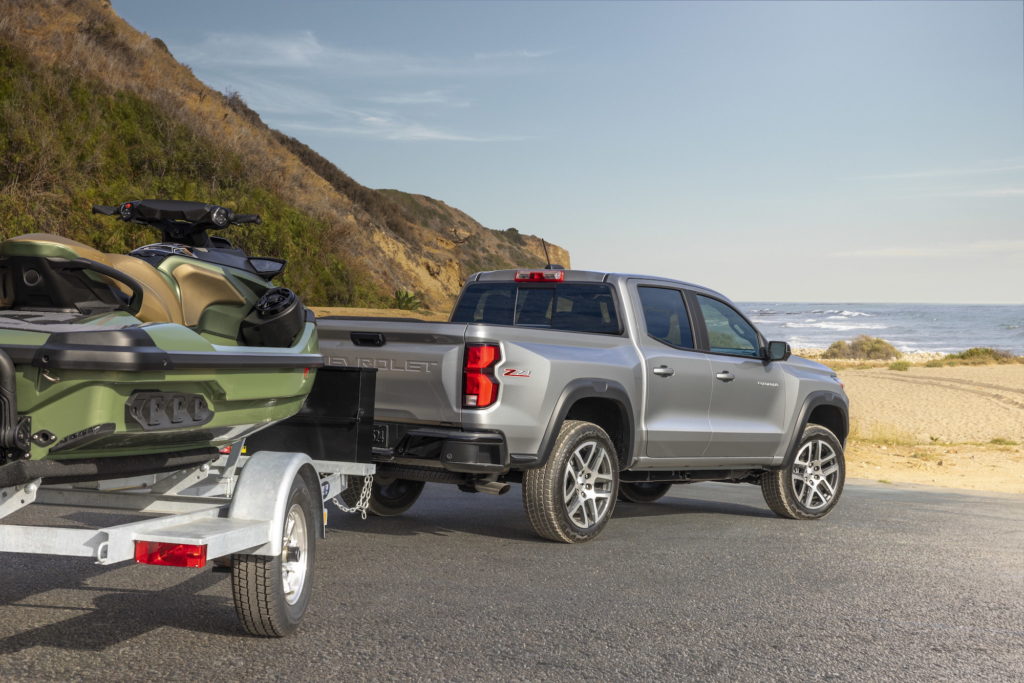
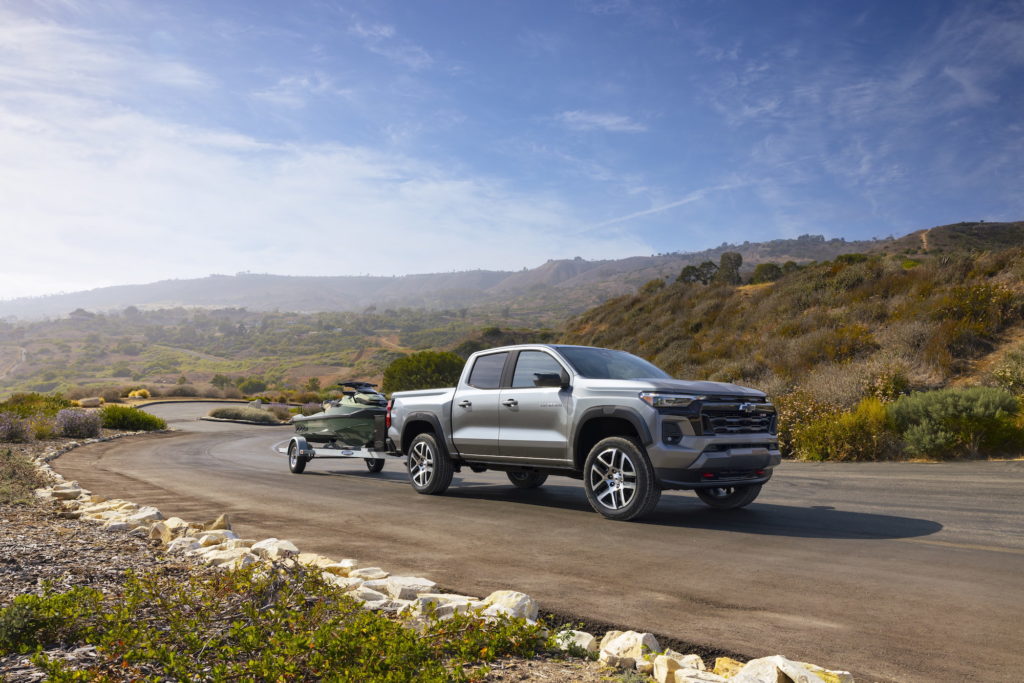
At the primary obstacle, the Z71, wearing much more street-oriented tires, was easily able to clear the gap and climb the dirt berm as it had a gravity assist, but it had also cleared the point heading up, despite a deficit of ground clearance and tire traction compared with the Trail Boss.
As a truck owner and fairly experienced off-road driver myself, the performance of the Trail Boss and Z71 were impressive, but one key part of the off-road passage stood out: the steering. My older Chevy truck uses a mechanical steering linkage with power steering assistance. In some places I know the bits we drove through would have had the steering wheel whipping about in my hands as we progressed.
But in the new Colorado with its electrical non-coupled steering, there was no such drama. Despite the pushback from the ruts and berms on the rough dirt road, there was no real pushback in the steering: keep the wheel straight and the truck goes straight, road be damned. I was prepared for the steering pushback out of habit, and when it didn’t materialize I wasn’t quite sure if that was a good thing or not.
In retrospect, it is a good thing. I felt fully in control, maybe more so, as I was able to make finer adjustments to my approach instead of fighting the steering column as the truck passed over obstacles. Out on the open road, the truck drives as normal. Off the pavement, the lack of fight from the wheel is a novel sensation but on balance a positive one.
A midsize overlander?
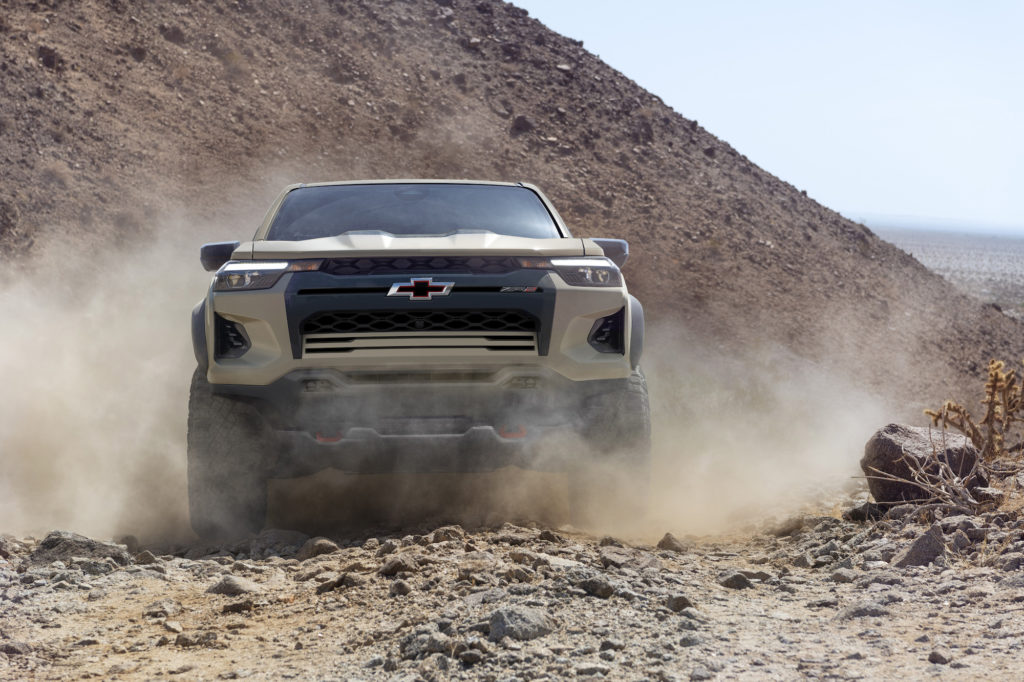
As it sits right now, the new Chevy Colorado would be a good fit for some adventures, but perhaps not quite the best choice for others. Bumping up the engine to Turbo Plus or HO is a must if you plan on loading the truck up and hitching a trailer, but the short bed limits some options like carrying ATVs, some motorcycles or longer items like kayaks or canoes. Racks can help solve some of those caveats, but just a bit more room would be nice.
Those expecting a demerit for a lack of a V6 or V8 will be disappointed; mashing the pedal on any of the trims still results in stalwart forward motion, especially in the Trail Boss. Again, there were no ZR2 examples available to drive. GM is being smart about keeping the V6 and V8 plants in the bigger trucks and streamlining the Colorado’s power options, and if the toughened-up turbo four can make the grade (and it very much does) then I’m happy to endure the turbo drone for this much power at this affordable price. It’s no hardship.
Overall, the new Chevy Colorado proved to be a capable, comfortable companion on the road and off of it, with an impressive infusion of tech at all trim levels and impressive performance when prodded. Even the work-a-day LT was fun to drive. Here’s hoping future iterations include a bit more space behind the cab as an option.
